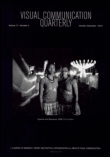
Visual Communication Quarterly
Scope & Guideline
Advancing Knowledge in Visual Communication
Introduction
Aims and Scopes
- Visual Culture Analysis:
The journal emphasizes the critical examination of visual culture, investigating how images shape and are shaped by societal values, beliefs, and practices. - Interdisciplinary Approaches:
It adopts an interdisciplinary perspective, incorporating insights from fields such as media studies, sociology, psychology, and art history to enrich the understanding of visual communication. - Political and Social Commentary:
A significant focus is placed on the role of visual media in political discourse and social movements, analyzing how images can influence public perception and mobilize action. - Methodological Diversity:
The journal encourages diverse methodological approaches, including qualitative analyses, visual ethnography, and multimodal discourse analysis, to capture the complexity of visual communication. - Impact of Digital Media:
It critically examines the evolving landscape of digital media, exploring how platforms like social media alter visual communication practices and influence audience engagement.
Trending and Emerging
- Visual Activism and Social Justice:
There is a growing emphasis on visual activism, particularly in relation to social justice movements, highlighting how visual media can be used to advocate for change and represent marginalized voices. - Digital and Social Media Dynamics:
Research focusing on the impact of digital and social media on visual communication practices is on the rise, as scholars explore how these platforms shape visual narratives and audience interactions. - Multimodal Communication:
Emerging studies are increasingly embracing multimodal communication, analyzing how various modes of representation (text, image, sound) work together to convey complex messages. - Representation of Global Crises:
Themes surrounding the visual representation of global crises, such as climate change and refugee movements, are gaining traction, reflecting a heightened awareness of urgent global issues. - Cognitive and Psychological Dimensions:
An emerging focus on the cognitive and psychological aspects of visual perception and communication is evident, as researchers explore how images affect emotions, cognition, and social behavior.
Declining or Waning
- Traditional Photojournalism:
There has been a noticeable decrease in studies centered around traditional photojournalism, possibly due to the rise of digital and social media platforms that alter how news is visually represented. - Static Visual Representation:
Research focusing solely on static images without considering dynamic contexts or interactive elements is becoming less frequent, as the field increasingly values interactivity and audience participation. - Historical Visual Analysis:
While historical perspectives remain important, there appears to be a waning interest in purely historical analysis of visual culture, with more emphasis now on contemporary issues and real-time visual communication. - Narrowly Defined Genres:
There has been a reduction in studies that focus on narrowly defined genres of visual media, as the journal encourages broader, more integrative analyses that capture multimedia interactions. - Cultural Texts in Isolation:
The examination of cultural texts in isolation is declining, with a shift towards understanding the interconnectedness of visual narratives across different media and cultural contexts.
Similar Journals
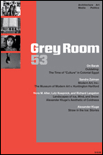
Grey Room
Engaging Minds at the Crossroads of DisciplinesGrey Room is a distinguished peer-reviewed academic journal published by MIT Press, focusing on interdisciplinary discussions at the intersection of architecture, communication, sociology, political science, and the visual and performing arts. Established in 2002, the journal has carved out a critical space for exploring the links between built environments and cultural narratives, engaging a diverse readership of researchers, professionals, and students. With an impact factor reflecting its contribution to these fields, it is recognized for fostering innovative dialogue and scholarship. Although it operates without an open access model, Grey Room continues to thrive in the academic community, particularly as it moves towards converged years spanning from 2002 to 2024. The journal's categorization into various quartiles highlights its relevance and ongoing commitment to contemporary issues. Readers can expect thought-provoking articles that challenge conventional boundaries of practice and scholarship, making Grey Room an essential resource for those interested in the dynamic interplay of architecture and culture.
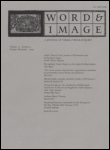
WORD & IMAGE
Connecting Perspectives: The Art of Words and ImagesWORD & IMAGE is a distinguished journal published by Routledge Journals, Taylor & Francis Ltd, focusing on the dynamic interplay between visual and verbal communication. Established in 1985, this esteemed journal covers a wide array of topics within linguistics, literature, and visual arts, contributing significantly to these interdisciplinary fields. With a commitment to fostering scholarly dialogue and innovation, WORD & IMAGE presents qualitative research, critical analyses, and theoretical explorations that illuminate the complex relationships between text and image. The journal's current impact factor reflects its role in nurturing academic discourse, making it a vital resource for researchers, professionals, and students alike. Although currently not open access, the journal maintains a rigorous peer-review process to ensure the highest academic standards. As it continues to engage a global audience, WORD & IMAGE serves as a key platform for advancing knowledge at the intersection of language and visual culture.

IC-Revista Cientifica de Informacion y Comunicacion
Elevating Research Standards in Information SciencesIC-Revista Cientifica de Informacion y Comunicacion, published by UNIV SEVILLA, EDITORIAL, stands at the forefront of academic discourse in the fields of Communication, Cultural Studies, Library and Information Sciences, and Linguistics and Language. With its ISSN 1696-2508 and E-ISSN 2173-1071, this esteemed journal showcases high-quality research, contributing significantly to the advancement of knowledge since its inception in 2016. The journal is recognized for its rigorous standards, holding a Q2 category in Communication, a Q1 category in Cultural Studies, as well as Q2 rankings in both Library and Information Sciences and Linguistics and Language as of 2023. With a growing reputation, it is ranked in the mid percentiles across various Scopus categories, marking it as a key player in its spheres of influence. Although not an open-access journal, it remains accessible through institutional subscriptions, making it a vital resource for scholars and practitioners alike. The editorial team is dedicated to fostering innovation and engagement within the academic community, aligning with the evolving dynamics of information and communication.

Review of Middle East Studies
Illuminating Contemporary Issues in the Middle EastReview of Middle East Studies, published by Cambridge University Press, is an essential academic journal that serves as a platform for interdisciplinary research focused on the Middle East. With an ISSN of 2151-3481 and an E-ISSN of 2329-3225, this journal has been disseminating impactful scholarship since its inception in 2007. Despite its placement in Q4 for Cultural Studies and Sociology and Political Science, and Q3 for History in the 2023 journal rankings, it continues to attract diverse contributions and discussions that enrich our understanding of the region. The journal's scope encompasses a broad spectrum of themes, enabling researchers and educators alike to engage with contemporary issues facing the Middle East. Although it operates under a traditional access model, its significance and contribution to academic discourse in the humanities and social sciences cannot be understated. With its headquarters in the United States, this journal fosters global connections and paves the way for future research endeavors in related fields.
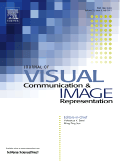
JOURNAL OF VISUAL COMMUNICATION AND IMAGE REPRESENTATION
Pioneering Research in Multimedia and CommunicationJOURNAL OF VISUAL COMMUNICATION AND IMAGE REPRESENTATION, published by Academic Press Inc Elsevier Science, is an influential platform dedicated to the realms of visual communication, media technology, and advanced image representation. With a strong focus on interdisciplinary approaches, this journal aims to foster the exchange of innovative ideas among researchers and professionals in the fields of computer vision, image processing, and signal processing. Recognized for its significance, it boasts an impressive impact factor within its category quartiles; notably, it ranks Q2 in Computer Vision and Pattern Recognition and Electrical and Electronic Engineering, while achieving Q1 in Media Technology. Based in the United States, the journal not only provides valuable insights into the latest developments from 1990 to 2024 but also encourages cutting-edge research that enhances multimedia systems and user interactions. As a vital resource for students, researchers, and industry professionals alike, the journal ensures a robust understanding of visual information processing, critical for navigating today's digital landscape.

Ekphrasis-Images Cinema Theory Media
Bridging the Gap Between Art and AcademiaWelcome to Ekphrasis-Images Cinema Theory Media, an academic journal dedicated to exploring the intersections of visual arts, cinema, and media studies. Published by the esteemed BABES-BOLYAI UNIVERSITY, FACULTY OF THEATRE & TELEVISION in Romania, this journal serves as a critical platform for scholars and practitioners to disseminate groundbreaking research and innovative ideas within these vibrant fields. With an ISSN of 2067-631X and an E-ISSN of 2559-2068, Ekphrasis is committed to enhancing the discourse surrounding contemporary visual culture, as evidenced by its Scopus rankings in the arts and humanities categories. Aiming to contribute to academic discussions from 2019 to 2024, it invites submissions that challenge conventional perspectives and promote new methodologies. Although currently positioned in the Q4 category for Communication and Q3 for Visual Arts and Performing Arts, the journal is poised for growth and aims to increase its impact factor through the openness of scholarly exchange and rigorous peer review. Join us in advancing the critical discourse at the crossroads of art and media!

Visual Ethnography
Exploring Cultures Through the Lens of Visual StorytellingVisual Ethnography, published by UNIV BASILICATA, is an innovative academic journal dedicated to the interdisciplinary exploration of visual methodologies within the realms of Anthropology, Communication, and Cultural Studies. With a notable emphasis on visual ethnographic practices, this journal serves as an essential platform for researchers, professionals, and students aiming to bridge the gap between visual representation and cultural analysis. Since its inception in 2012, Visual Ethnography has contributed significantly to the academic discourse, despite its current positioning in the lower quartiles of its field as evidenced by its Scopus rankings. The journal actively engages its audience by providing open access options, ensuring that scholarship in visual culture is available to a wider community. With the academic landscape continually evolving, Visual Ethnography remains a vital resource for those seeking to understand the complexities of culture through a visual lens in the context of today’s globalized society.
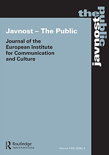
JAVNOST-THE PUBLIC
Unpacking the Complexity of Media InfluenceJAVNOST - THE PUBLIC is a prestigious academic journal that has established itself as a leading platform within the field of communication. Published by Routledge Journals, Taylor & Francis Ltd in the United Kingdom, this journal caters to researchers, professionals, and students interested in the multifaceted dynamics of public communication and societal engagement. With an impressive Q1 ranking in the Communication category as of 2023 and a Scopus ranking of #166/511, placing it in the 67th percentile, it is widely recognized for its rigorous research contributions and theoretical insights. The journal has been in continuous circulation since its inception in 1994, and it actively seeks to publish high-quality, empirical studies that explore the nuances of public discourse, media influence, and societal interactions. Though a traditional publication, JAVNOST - THE PUBLIC remains committed to advancing the field by offering valuable resources and knowledge crucial for addressing contemporary challenges in public communication.
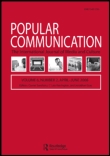
Popular Communication
Exploring the Dynamics of Media and CulturePopular Communication, published by Routledge Journals, Taylor & Francis Ltd, is a leading academic journal in the field of Communication, recognized for its Q1 ranking in the 2023 Scopus category. With an ISSN of 1540-5702 and an E-ISSN of 1540-5710, this journal has been converging significant research from 2010 to 2024, highlighting contemporary trends and evolving dynamics in popular communication practices. The journal is based in the United Kingdom and focuses on the intersection of media, culture, and communication, making it a vital resource for researchers, professionals, and students interested in understanding the impact of communication in society today. Although it does not offer Open Access options, it remains a cornerstone for scholarly discourse, with an impressive rank of #96 out of 511 in Social Sciences Communication, placing it in the 81st percentile. Contributions to this journal play a critical role in advancing knowledge and encouraging further scholarship in the diverse realm of popular communication.

Papers on Social Representations
Exploring the Dynamics of Social Identity and CommunityPapers on Social Representations (ISSN: 1021-5573) is a distinguished academic journal published by the University Institute of Lisbon ISCTE-IUL, based in Portugal. Specializing in the evolving field of Social Psychology, this journal plays a pivotal role in disseminating innovative research and theoretical advancements that shape our understanding of social representations, identity, and community dynamics. With a 2023 Scopus ranking placing it in the 54th percentile among its peers (Rank #141/310), its contributions are recognized within the academic community as essential for fostering interdisciplinary dialogue. The journal operates on a Q3 quartile in 2023, indicating its growing influence and relevance. With a commitment to open access principles, it ensures that research is readily available to diverse readerships, thereby enhancing the reach and impact of scholarly work. Covering a continuum from 2016 to 2024, this journal not only acts as a repository for pioneering studies but also encourages emerging researchers and practitioners to engage with transformative concepts in Social Psychology.